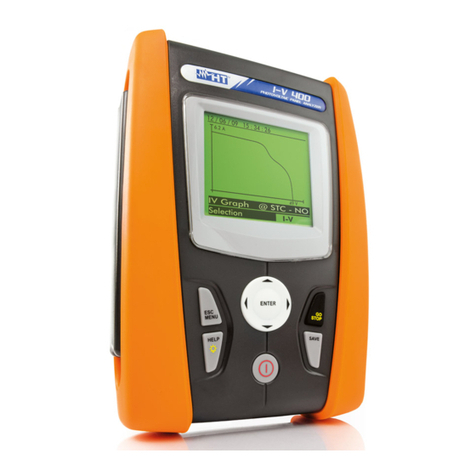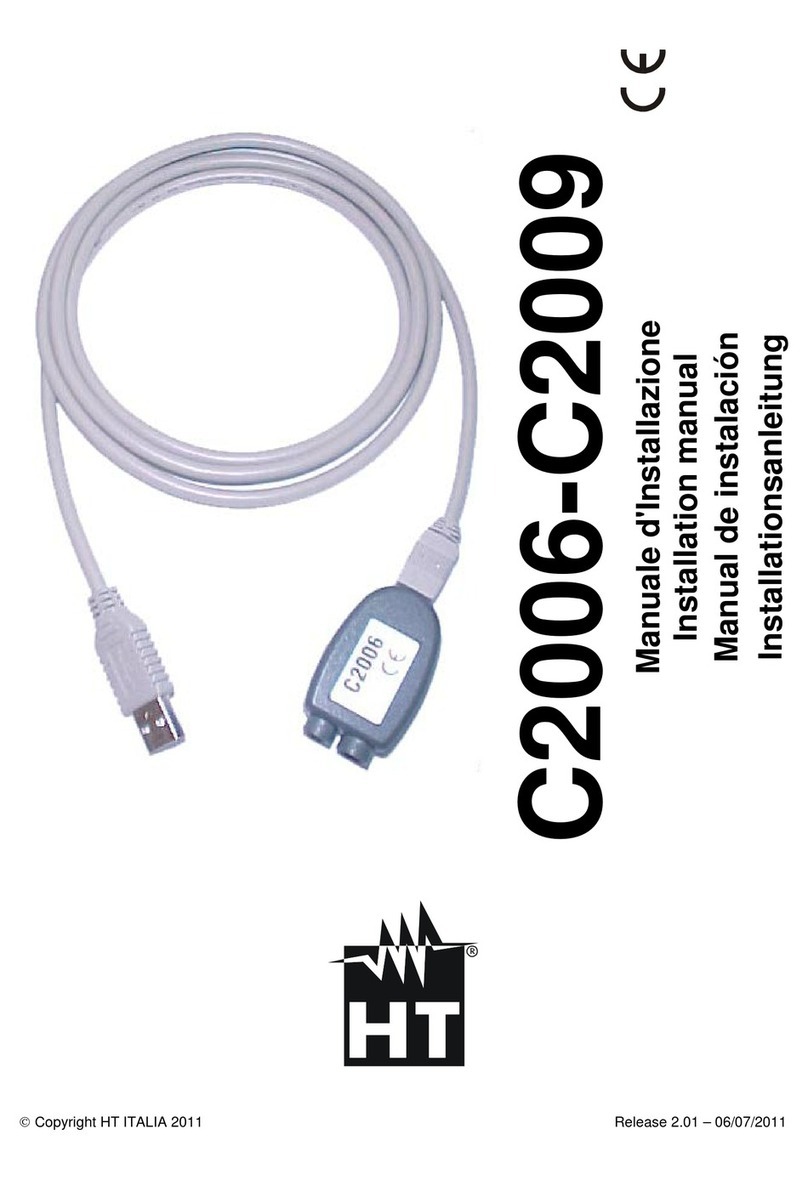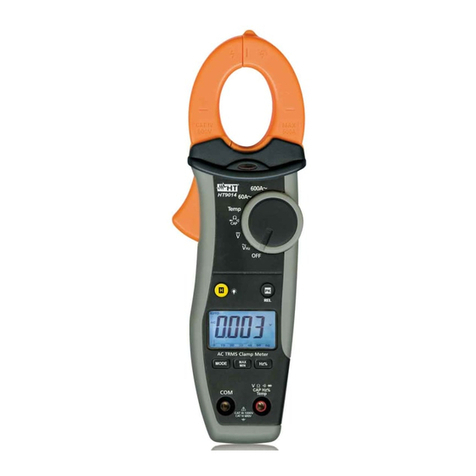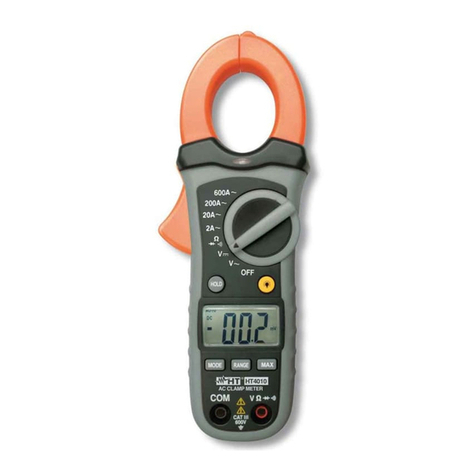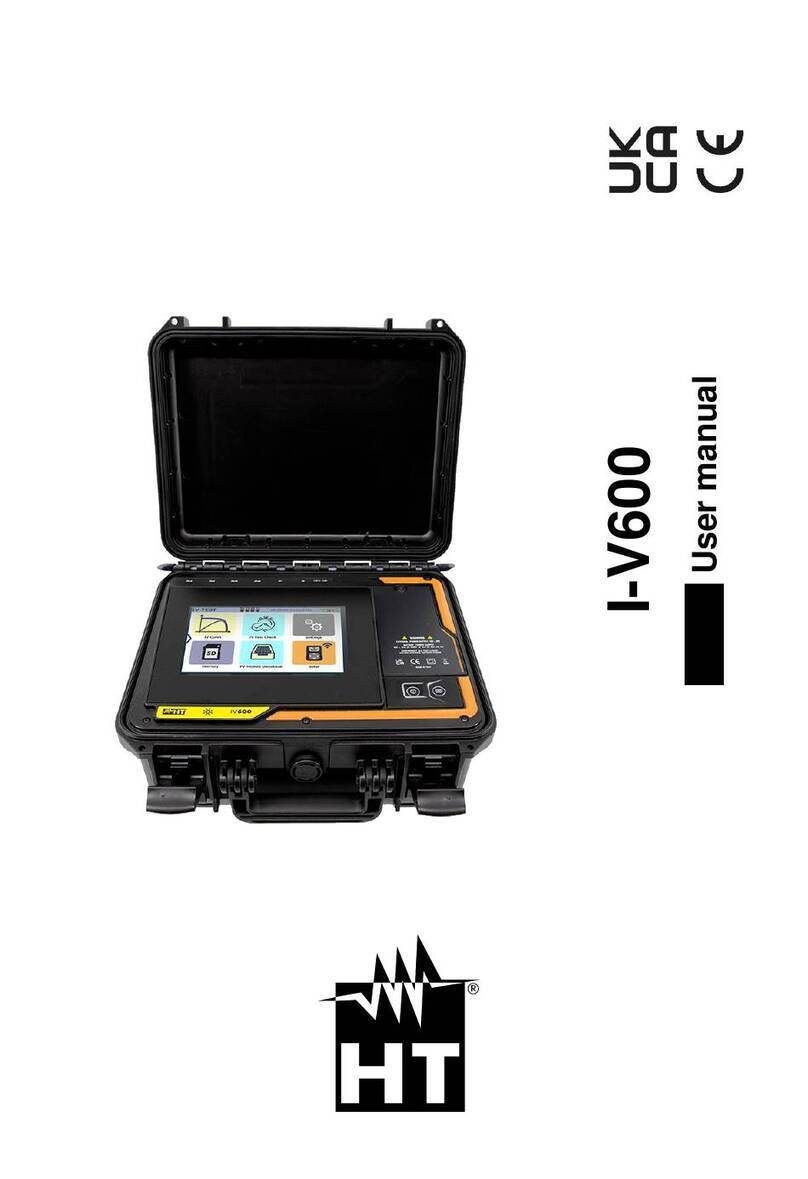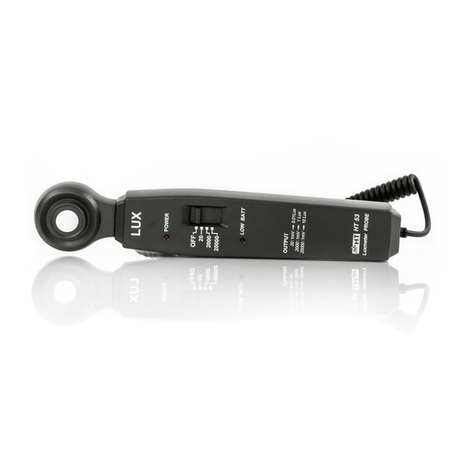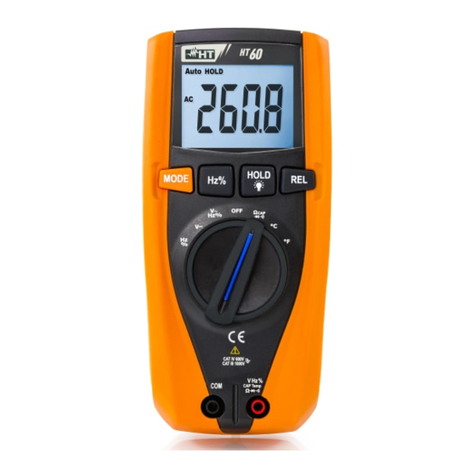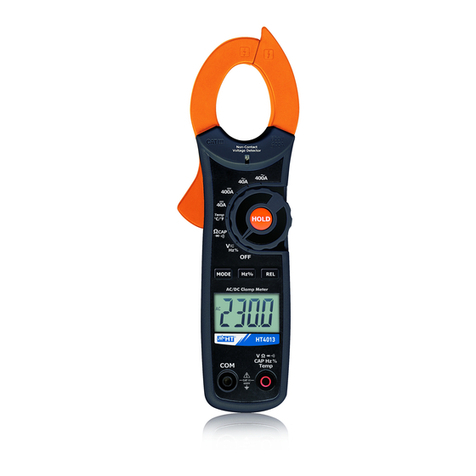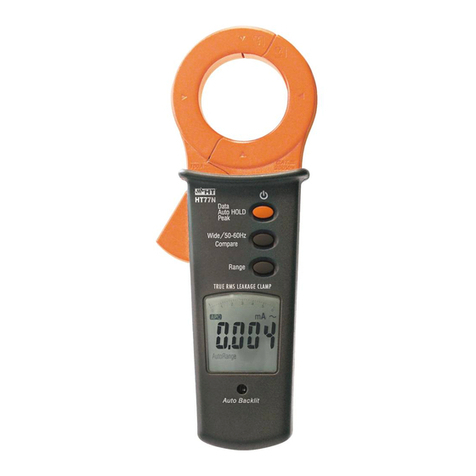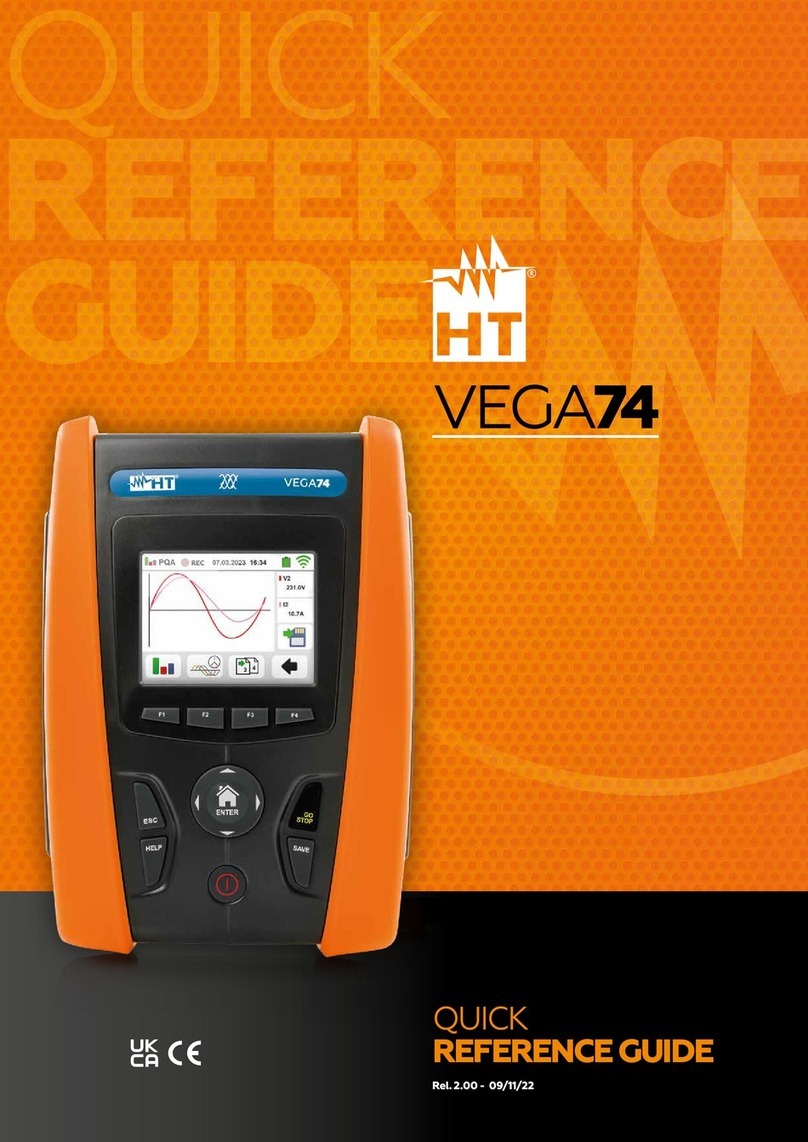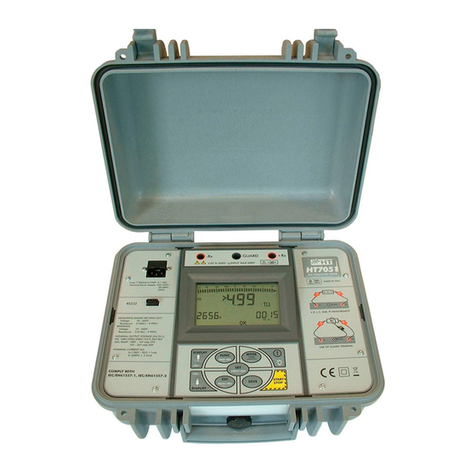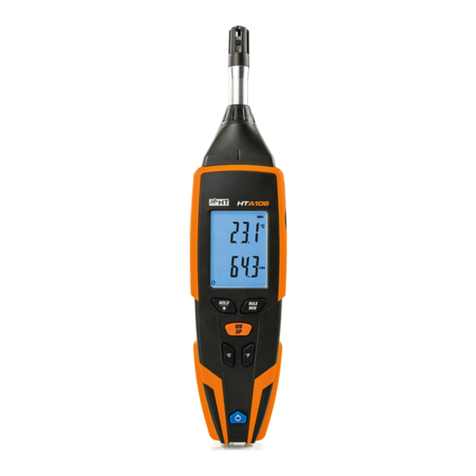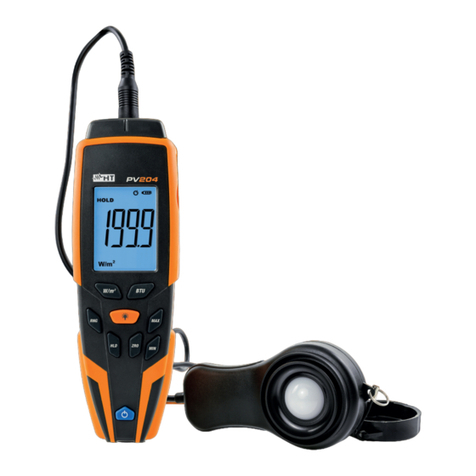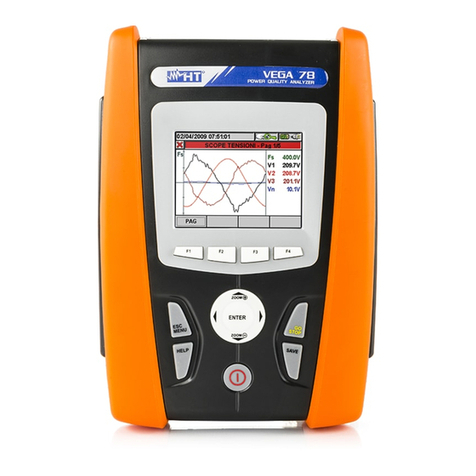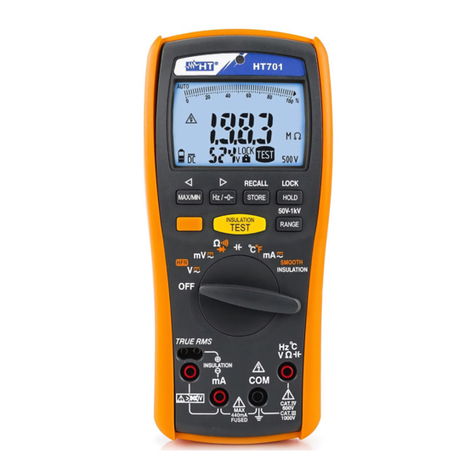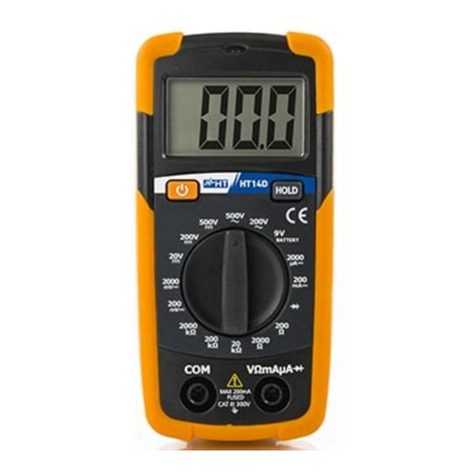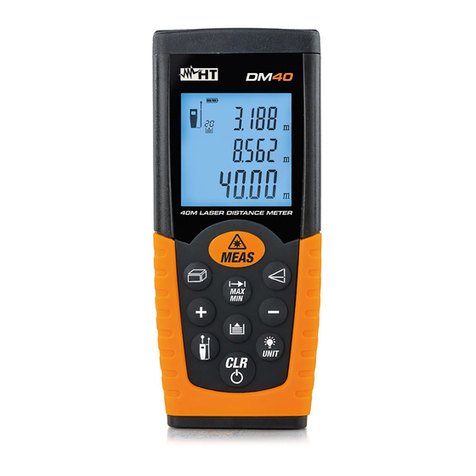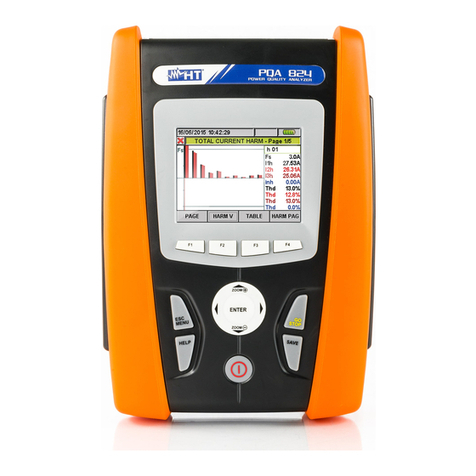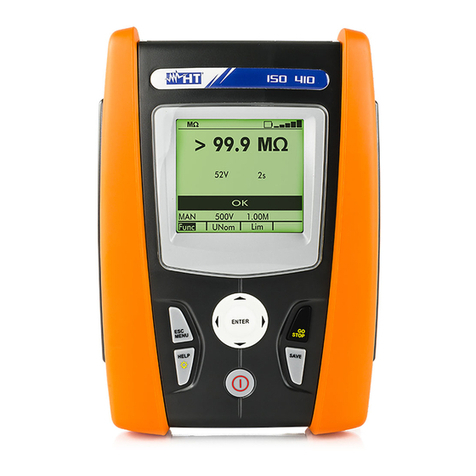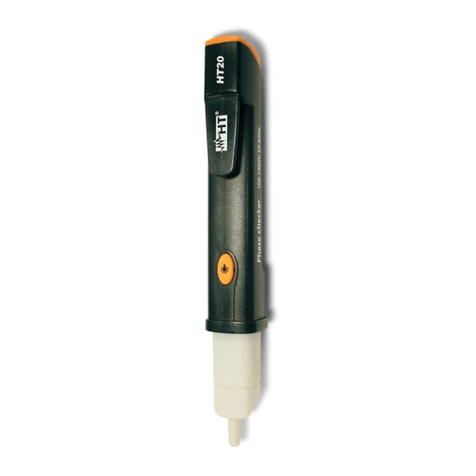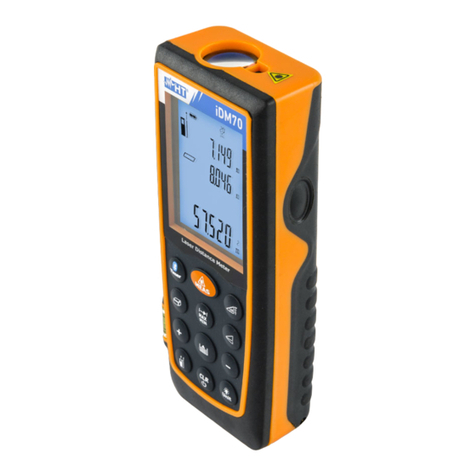
ECLIPSE - HT9025
EN - 1
TABLE OF CONTENTS
1.PRECAUTIONS AND SAFETY MEASURES ...............................................................2
1.1.Preliminary instructions ..................................................................................................... 3
1.2.During use......................................................................................................................... 3
1.3.After use............................................................................................................................ 3
1.4.Definition of Measurement (Overvoltage) category........................................................... 4
2.GENERAL DESCRIPTION ...........................................................................................5
2.1.Measuring average values andTRMS values.................................................................... 5
3.PREPARATION FOR USE ...........................................................................................6
3.1.Initial checks...................................................................................................................... 6
3.2.Instrument power supply ................................................................................................... 6
3.3.Storage.............................................................................................................................. 6
4.NOMENCLATURE........................................................................................................7
4.1.Description of the instrument............................................................................................. 7
4.2.Description of function keys .............................................................................................. 9
4.2.1.Key HOLD/REL .......................................................................................................................... 9
4.2.2.Key RANGE................................................................................................................................ 9
4.2.3.Key MODE/VFD ......................................................................................................................... 9
4.2.4.Key IR/ (ECLIPSE), Key (HT9025) ............................................................................ 9
4.2.5.Key /INRUSH......................................................................................................................... 9
4.3.Description of internal functions ...................................................................................... 10
4.3.1.Description of the display, Multimeter section .......................................................................... 10
4.3.2.Description of the display, Thermal camera section (ECLIPSE).............................................. 11
4.3.3.AC+DC current and voltage measurement .............................................................................. 11
4.3.4.Storage of measurement results .............................................................................................. 12
4.3.5.Relative measurement.............................................................................................................. 12
4.3.6.MIN/MAX and PEAK measurement ......................................................................................... 13
4.3.7.Detection of AC voltage without contact................................................................................... 13
4.3.8.Measurement of AC, AC+DC Voltage with low impedance (LoZ)............................................ 14
4.3.9.Measurement of Voltage or Current on VFD devices .............................................................. 14
4.3.10.General menu of the instrument............................................................................................... 15
5.OPERATING INSTRUCTIONS...................................................................................21
5.1.DC voltage measurement................................................................................................ 21
5.2.AC, AC+DC, VFD voltage measurement ........................................................................ 22
5.3.LoZAC, LOZAC+DC voltage measurement .................................................................... 23
5.4.Frequency and Duty Cycle measurement ....................................................................... 24
5.5.Resistance measurement and continuity test.................................................................. 25
5.6.Diode test ........................................................................................................................ 26
5.7.Capacitance measurement ............................................................................................. 27
5.8.Temperature measurement with K-type probe................................................................ 28
5.9.DC current measurement ................................................................................................ 29
5.10.AC current measurement ................................................................................................ 30
5.11.Inrush current measurement ........................................................................................... 31
5.12.Measurement of DC, AC, AC+DC current with clamp transducers ................................. 32
5.13.Data Logger function....................................................................................................... 33
5.14.Use of the internal thermal camera (ECLIPSE)............................................................... 37
5.15.Bluetooth connection and use of the APP HTMercury .................................................... 39
6.MAINTENANCE .........................................................................................................40
6.1.Recharging the internal battery ....................................................................................... 40
6.2.Cleaning the instrument .................................................................................................. 40
6.3.End of life ........................................................................................................................ 40
7.TECHNICAL SPECIFICATIONS ................................................................................41
8.ACCESSORIES..........................................................................................................45
9.ASSISTANCE.............................................................................................................46
9.1.Warranty conditions......................................................................................................... 46
9.2.Assistance....................................................................................................................... 46













